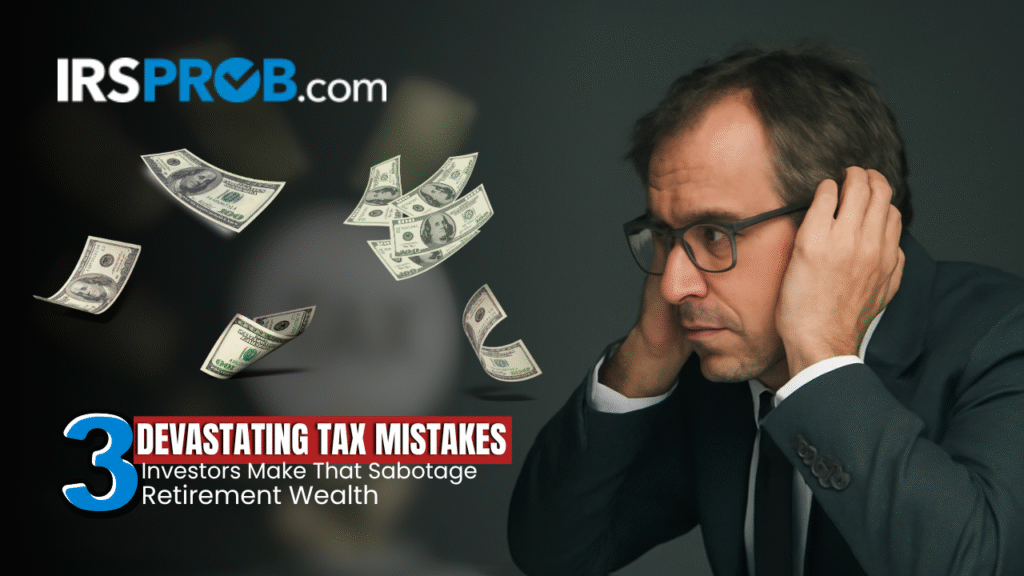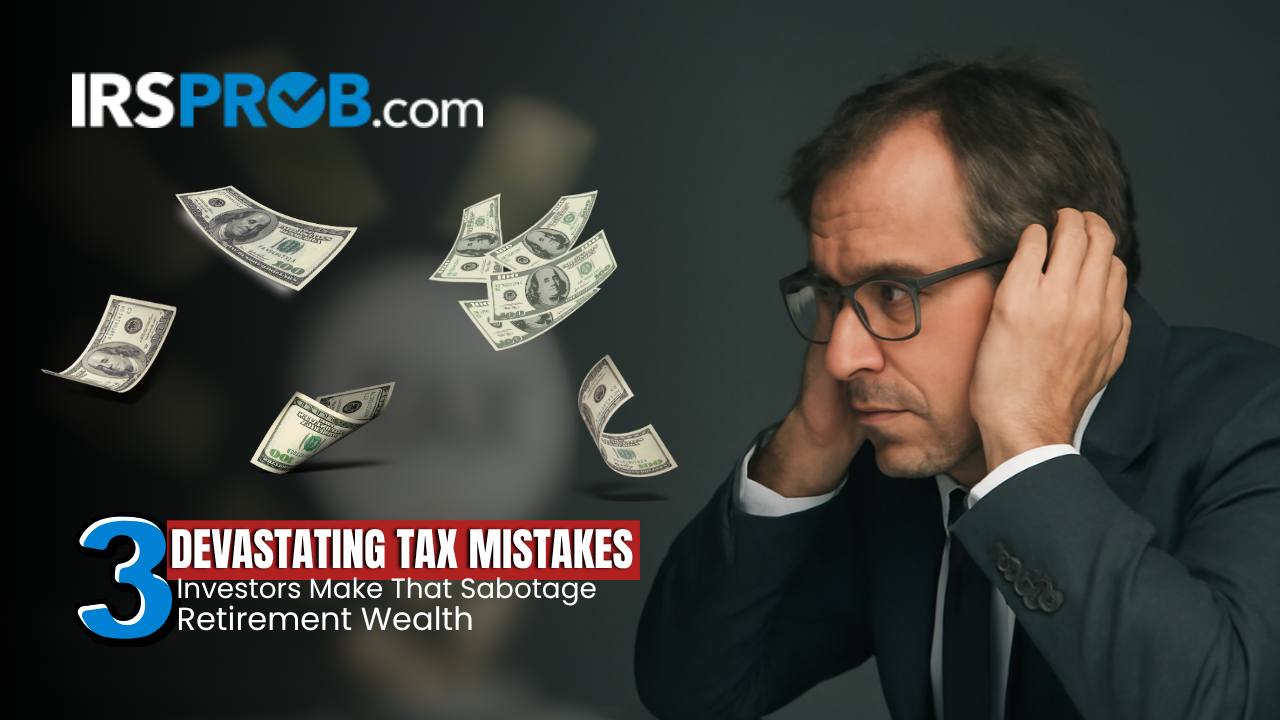
Watching your investment returns evaporate through preventable tax mistakes investors make is financially painful. Yet countless portfolio holders sacrifice thousands of dollars annually through inefficient tax strategies.
The difference between a secure retirement and constantly worrying about money often comes down to how skillfully you manage the tax implications of your investments.
Understanding where tax mistakes investors commonly occur can transform your financial trajectory. These missteps are not just costly, they’re completely avoidable with proper knowledge and strategic planning.
Table of Contents
- The Dividend Tax Trap Tax Mistakes Investors Repeatedly Fall Into
- Overlooking Strategic Loss Recognition
- Ignoring Strategic IRA Withdrawal Windows
- Creating Your Tax-Efficient Investment Strategy
The Dividend Tax Trap Tax Mistakes Investors Repeatedly Fall Into
Many portfolio holders remain unaware of what actually fills their taxable accounts. This ignorance creates one of the most expensive tax mistakes investors make regularly.
Consider this scenario: An investor needs regular income from their portfolio. Their advisor places everything into taxable bonds. While this generates consistent cash flow, it creates an enormous tax burden that drains wealth systematically.
Here’s why this matters tremendously. When you receive dividends from American corporations, the IRS typically treats them as long-term capital gains. Your maximum tax rate hits just 20 percent, and depending on your income bracket, you might pay zero tax on those dividends.
Contrast that with bond interest, which the government taxes as ordinary income. The top ordinary income tax rate reaches 37 percent, nearly double the maximum dividend rate.
This single distinction represents one of the most consequential tax mistakes investors face regularly. If you’re generating $50,000 in investment income, the difference between dividend treatment and ordinary income treatment could exceed $8,000 in additional taxes each year.
The strategy needs purposeful portfolio design. When you require income from taxable accounts, focus first on dividend stocks from reputable companies. These investments can offer consistent income while delivering better tax treatment that prevents you from committing common tax errors investors tend to make.
Study companies with a history of paying dividends. Utilities, consumer staples, and mature technology companies tend to have stable dividend programs. Not all situations require dividend-oriented strategies, but when they are in line with your objectives, you should take advantage of all tax benefits possible.
Ignoring Strategic IRA Withdrawal Windows Creates Costly Tax Mistakes Investors Face
Perhaps the most important tax errors investors commit pertain to taking withdrawals from retirement accounts. Pre-tax IRAs and 401(k) accounts provide upfront deductions, but you will end up paying taxes on each dollar you take out in retirement.
Most individuals fall back on the same strategy, leave it all alone until mandatory distributions start at age 73, or a crisis necessitates a significant withdrawal. This hands-off plan is one of the costliest tax blunders investors commit.
They can drive you into substantially higher brackets. Think of being forced to take $100,000 for a health crisis. If you’re already making $80,000 a year, this withdrawal could boost your earnings to $180,000 in this one year, possibly moving you from the 22 percent bracket into the 32 percent bracket.
Proactive planning prevents this expensive scenario and helps you avoid tax mistakes investors commonly encounter. Strategic conversion strategies allow you to gradually move money from tax-deferred accounts into more favorable tax treatment.
The Roth IRA conversion represents one of the most valuable tools available for avoiding tax mistakes investors make with retirement accounts. You pay taxes now on converted amounts, but then your money grows completely tax-free forever. Withdrawals from Roth IRAs carry no tax liability.
The ideal approach involves converting smaller amounts across multiple years rather than executing one massive conversion. This keeps you in lower tax brackets throughout the conversion process.
Consider someone planning a major purchase four years after retirement. Rather than withdrawing a lump sum from their IRA, they could extract smaller amounts annually, placing funds into a taxable brokerage account. When purchase time arrives, they’ve already spread the tax burden across multiple years at potentially lower rates.
Years when you experience lower income create golden opportunities for Roth conversions. If you retire at 62 but delay Social Security until 70, those eight years offer a window where your income may be substantially lower. During these years, you can convert IRA money while remaining in lower tax brackets.
Creating Your Tax-Efficient Investment Strategy To Avoid Tax Mistakes Investors Make
Tax mistakes made by investors are largely a function of ignorance, not incompetence. The tax code has many provisions that benefit investors, but you have to know about them and employ them yourself.
Begin by looking over your present portfolio composition in detail. What accounts contain what kinds of investments? Are you leveraging the tax benefits of dividends in taxable accounts? When was the last time you took a look at potential for tax-loss harvesting?
One advanced strategy is “asset location,” where you put various investment types in accounts according to their tax attributes. Tax-unfavorable investments such as bonds should be in tax-deferred accounts. Tax-favorable investments such as index funds function best in taxable accounts.
The nuance of tax planning reinforces the benefit of professional advice. Tax-efficient investment specialists can realize possibilities particular to your circumstance that generic advice cannot cover.
Small incremental increases in tax efficiency add up hugely over decades. Lowering your investment tax burden by only a few thousand dollars per year can amount to tens of thousands more in retirement savings over the long haul.
Look at this illustration: A savvier investor who saves $3,000 a year with more effective tax planning and invests the savings at a 7 percent return would wind up with an extra $202,000 in 30 years. That sizeable amount is the true price of tax errors investors incur when they do not maximize their plans.
Your mission should never be to avoid taxes altogether. Rather, it should be to pay precisely what you owe and no more than one dollar through careless mistakes. By careful planning in regard to dividends, smart loss harvesting, and savvy retirement account management, you can retain much more of your investment profits working on your behalf.






